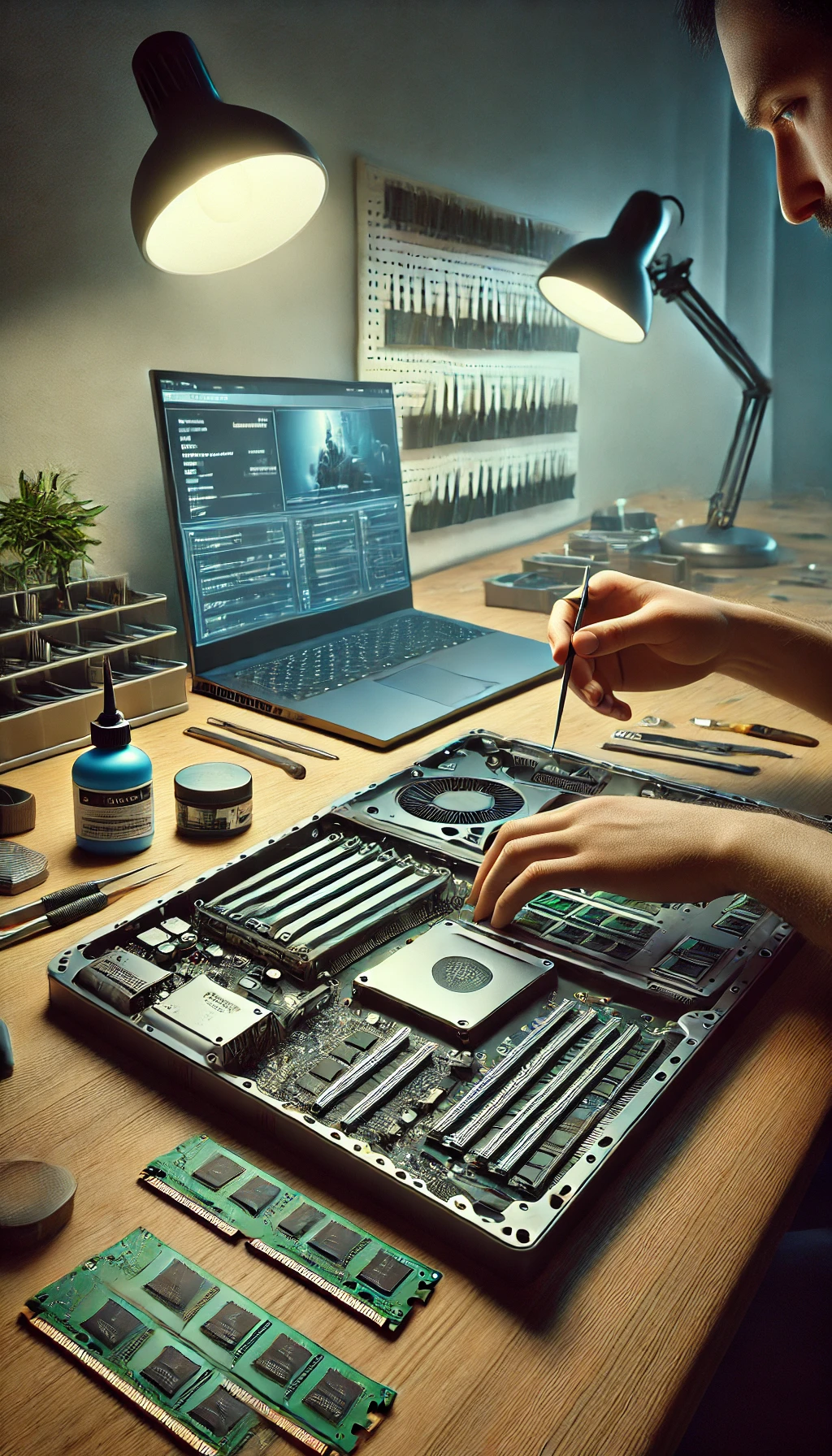
Building a Custom Laptop: Is It Really Feasible?
Published on: December 14, 2024
In the realm of custom-built PCs, desktop enthusiasts have long celebrated the flexibility and cost-effectiveness of assembling their dream machines. But what about laptops? The idea of building a custom laptop, tailored specifically to one's needs, is both intriguing and challenging. While laptops are not as modular as their desktop counterparts, technological advancements and niche markets are beginning to close the gap. In this article, we delve into the feasibility of building a custom laptop, exploring components, cost factors, challenges, and the unique benefits of crafting a personalized mobile computing experience.
Why Consider Building a Custom Laptop?
For many, the allure of building a custom laptop stems from the limitations of pre-built models. Major laptop manufacturers often design their machines with specific use cases in mind, such as gaming, productivity, or ultralight portability. While these devices perform admirably within their niches, they rarely offer a "perfect" fit for individual preferences. Custom laptops provide the opportunity to prioritize specific features, such as:
- Performance Optimization: Select the ideal CPU, GPU, and RAM for your workload.
- Battery Life: Tailor the laptop for extended battery life or rapid charging capabilities.
- Portability: Design a lightweight machine without sacrificing key functionalities.
- Aesthetic and Ergonomic Preferences: Choose custom materials, colors, and keyboard layouts.
- Upgradability: Enhance the lifespan of your device with modular components.
However, these benefits come with significant challenges, as the laptop industry is not as welcoming to modularity as the desktop world.
Understanding Core Laptop Components
To comprehend the feasibility of building a custom laptop, it’s essential to understand the primary components involved:
CPU (Central Processing Unit)
The CPU acts as the brain of the laptop, processing instructions and managing data flow. Laptops typically use mobile processors (e.g., Intel’s Core i7 H-series or AMD’s Ryzen U-series) that prioritize power efficiency over raw performance. Custom laptops often rely on CPUs soldered to the motherboard, limiting upgradability.
GPU (Graphics Processing Unit)
A dedicated GPU is essential for gaming, 3D rendering, or machine learning tasks. Mobile GPUs, such as NVIDIA’s GeForce RTX series, are common in high-performance laptops. External GPU enclosures (eGPUs) offer an alternative for modular graphics performance, albeit with limitations.
RAM (Random Access Memory)
RAM determines a laptop’s multitasking capabilities. Some laptops use soldered RAM, which cannot be upgraded. Opting for modular SODIMM slots ensures future expandability, but this may restrict the laptop’s design to thicker chassis.
Storage
Most modern laptops support NVMe SSDs, which provide lightning-fast read/write speeds. Custom laptops allow for larger storage capacities or dual-drive configurations, combining SSDs and HDDs for speed and bulk storage.
Battery
Battery life is a critical consideration in laptop design. Custom laptops can use larger battery cells or prioritize energy-efficient components, though trade-offs with weight and size often occur.
Display
Customizable display options include screen size, resolution (e.g., 4K vs. FHD), refresh rates, and panel types (e.g., IPS vs. OLED). Building a laptop with a high-quality display may require sourcing compatible panels and expertise in assembly.
Chassis and Cooling
Laptop chassis design is more intricate than desktop cases due to the need for portability and efficient cooling. Custom builders must ensure proper thermal management to prevent overheating while maintaining a sleek profile.
Modular Laptop Options: Bridging the Gap
While fully custom laptops remain rare, the industry is witnessing a growing trend toward modularity. Companies like Framework and Clevo offer platforms for semi-customizable laptops:
Framework’s modular laptops emphasize repairability and upgradeability. Users can swap out components like the motherboard, memory, storage, and even ports. These devices cater to tech-savvy users who value longevity and sustainability.
Another brand, like Clevo, provides barebone laptops, which include the chassis, cooling system, and motherboard. Users can select their CPU, GPU, RAM, storage, and operating system, offering significant customization while bypassing some technical challenges.
Other Niche brands like XMG and System76 offer customizable laptops tailored for gamers and developers, respectively. While not as modular as desktops, these laptops provide a range of configurable options.
Challenges of Building a Custom Laptop
Despite its appeal, building a custom laptop involves significant hurdles:
Limited Component Compatibility
Unlike desktops, where components adhere to standardized form factors (e.g., ATX, PCIe), laptops lack universal compatibility. Most components are designed for specific models, making sourcing and assembly a daunting task.
Specialized Tools and Knowledge
Assembling a laptop requires precision tools and expertise. Tasks such as installing a display panel or integrating a cooling system demand a higher skill level than building a desktop.
Cost Considerations
Custom laptops often cost more than pre-built alternatives due to the niche market and economies of scale. While customization offers unique benefits, it’s rarely the most cost-effective solution.
Warranty and Support
Manufacturers of pre-built laptops typically offer warranties and customer support. Custom laptops, especially those built from scratch, may lack such protections, leaving users to troubleshoot issues independently.
Upgradability vs. Portability
Custom laptops often face trade-offs between upgradability and portability. Modular components, while versatile, tend to increase the laptop’s size and weight.
The Cost Factor: Custom vs. Pre-Built Laptops
To evaluate feasibility, it’s essential to compare the costs of custom laptops with equivalent pre-built models. Consider the following scenarios:
Scenario 1: High-Performance Gaming Laptop
Custom Laptop: Modular chassis with high-end GPU, CPU, and 32GB RAM.
Estimated Cost: $2,500 - $3,000
Pre-Built Laptop: MSI or Alienware gaming laptop with similar specs.
Estimated Cost: $2,000 - $2,500
Scenario 2: Lightweight Productivity Laptop
Custom Laptop: Compact chassis with energy-efficient CPU, 16GB RAM, and 1TB SSD.
Estimated Cost: $1,200 - $1,500
Pre-Built Laptop: Dell XPS or MacBook Air.
Estimated Cost: $1,000 - $1,300
Custom laptops often incur higher costs due to limited scalability and niche component sourcing. However, they may deliver unique value through personalized features.
Building vs. Buying: When to Consider Custom Laptops
Custom laptops are best suited for users with specific needs not addressed by mainstream devices. Scenarios where custom laptops excel include:
- Unique Workflows: Engineers, video editors, and developers with specialized software requirements.
- Sustainability Focus: Users seeking repairable, long-lasting devices.
- Enthusiast Projects: Tech enthusiasts who value the challenge and creativity of building a custom machine.
Conversely, users with standard requirements (e.g., casual gaming, general productivity) may find pre-built laptops more practical and cost-effective.
Future of Custom Laptops
The rise of modular platforms and consumer demand for sustainability are driving innovation in the laptop industry. Framework’s success demonstrates that there is a market for repairable, upgradeable laptops. Additionally, advancements in 3D printing and open-source hardware could further democratize custom laptop building in the future.
Predicted Trends:
- Increased Modularity: More manufacturers may adopt modular designs, allowing users to upgrade CPUs, GPUs, and other components.
- Eco-Friendly Solutions: Emphasis on recyclable materials and energy-efficient designs.
- Community-Driven Innovation: Open-source projects may provide blueprints for DIY laptop enthusiasts.
Is It Feasible?
Building a custom laptop is feasible, but it’s not for everyone. The process demands significant time, resources, and expertise, and the resulting device may not outperform high-quality pre-built models in terms of cost-effectiveness. However, for those seeking a truly personalized computing experience, the challenge can be immensely rewarding.
The key is to weigh your priorities. If upgradability, repairability, or niche features top your list, a custom laptop might be worth the investment. Otherwise, a carefully chosen pre-built laptop can offer excellent performance and reliability at a lower cost.
As technology continues to evolve, the dream of a fully modular, universally customizable laptop may become a reality. Until then, custom laptops remain a niche pursuit, blending innovation, creativity, and technical expertise into a unique computing journey.
